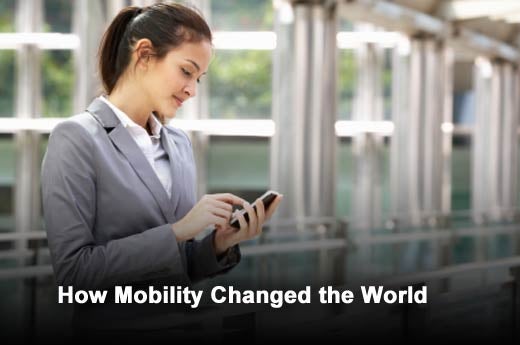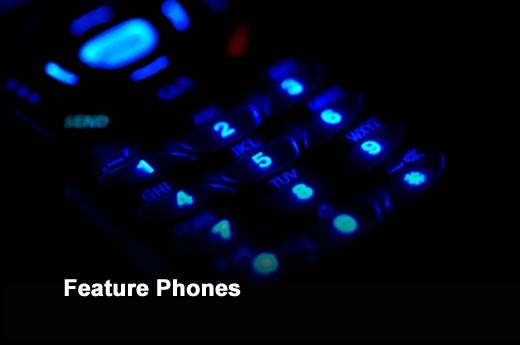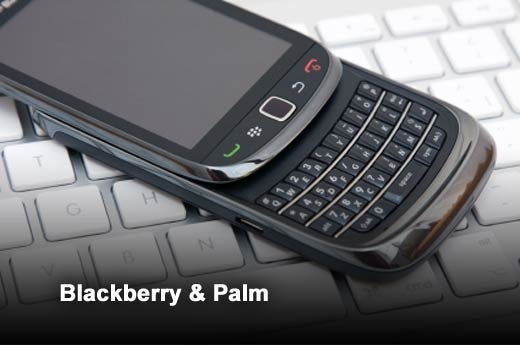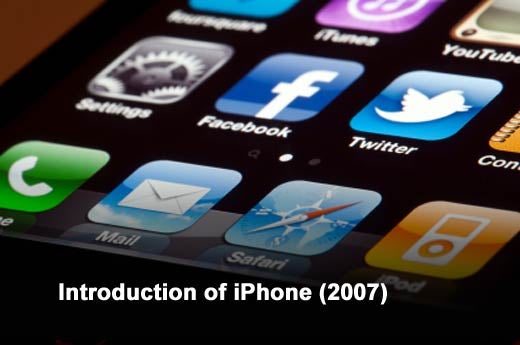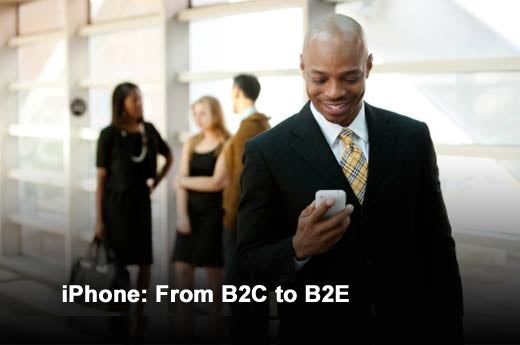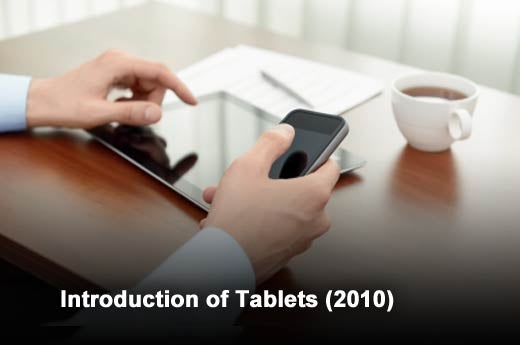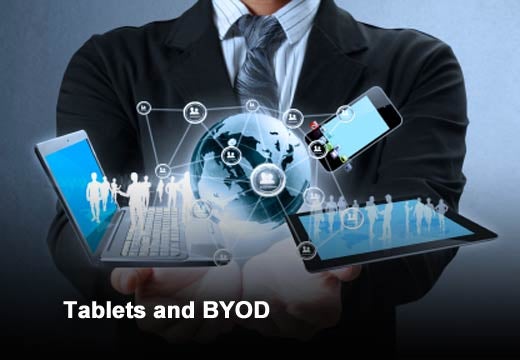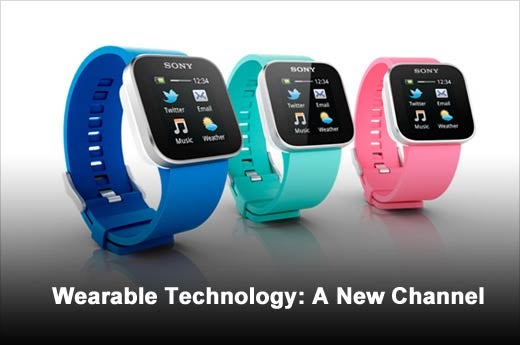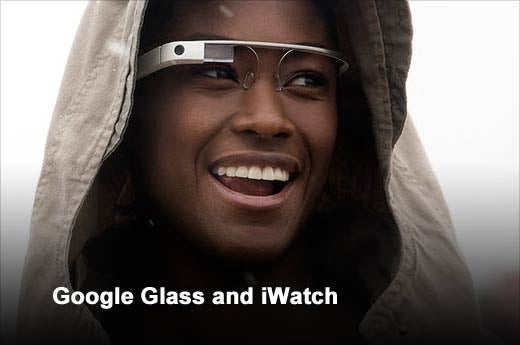The trajectory of mobility has been at a torrid pace and perhaps growing faster than any other technology that we have ever seen. With mobile technology, it seems that new and more powerful devices come out almost every fiscal quarter. It wasn’t long ago that we were using pay phones, taking pictures with handheld and even digital cameras, capturing video on camcorders, having CD players, browsing the Web and performing work on our desktop computers. We also only interacted socially by meeting each other in person. All of that is now completely possible and at a very high standard with mobility.
Mobility has been the game changer in the past decade and has changed the paradigm of society. It is perhaps the most significant innovation of a generation. What is absolutely clear is that mobility will continue to grow and evolve as we move forward. More facets of our lives will start to converge with mobility. Although it is inevitable that the torrid pace of mobility will eventually slow down, there is no question that innovation will continue. Here’s a closer look at the evolution of mobility, provided by Dipesh Mukerji, senior director of product strategy and marketing at Kony.
Click through for an overview of the evolution in mobility and its effect on society, as identified by Dipesh Mukerji, senior director of product strategy and marketing at Kony.
Prior to 2007, the world of mobile phones was distinctly defined. Feature phones, which consisted of phones that did little more than call, text and poorly browse, were dominating the B2C market space. Phones like the Motorola Razr and companies like Motorola, Nokia and Sony ruled the consumer market. Consumers needed to have a feature phone for the primary purpose of staying in touch when on-the-go or for emergencies. Rarely were these phones used for browsing or purposes other than calling or texting.
In the B2E space, the dominating presence was Blackberry, along with Palm as a distant second. The major advances that Blackberry provided were twofold: email (both personal and business) with a full physical keyboard, and a level of security that IT admins fell in love with. No feature phone had the same level of security as Blackberry, and they certainly couldn’t interact with email like Blackberry did. Companies could now reach their employees whenever and wherever they were and, as a result, productivity and efficiency increased.
But these devices were expensive and certainly didn’t appeal to the entire B2C market that did not have a need for secure phones or email 24/7. Blackberries didn’t come in funky colors like feature phones did. Blackberries didn’t have background images or phone plates to jazz up a phone like feature phones did. Blackberries and Palms simply didn’t appeal to the non-professional audience. Even professional workers who loved their “crackberries” had two phones: Blackberry for work and emails, and potentially a feature phone for family and friends. The B2E and B2C lines were clearly drawn prior to 2007 for phones. Phone life was not complicated.
Although the advent of the iPhone in 2007 revolutionized the mobile phone space, the iPhone’s success was actually predicated on the success of the iPod and iTunes phenomenon from 2001 to 2006. Apple was able to create a revolutionary product with the iPod and iTunes. The iPod was in fact the first real massively adopted mobile gadget that transcended the B2E and B2C lines. Both of these markets containing professional and consumer users had to have an iPod. Once Apple and Steve Jobs saw the virality of the iPod, their genius quickly saw that phones and music didn’t need to be separate products. Apple saw that the phone could actually have enough computing power to serve as a mini computer. The convergence of these three thoughts (phone, music and computing) enabled Apple to come out with the iPhone and create a movement.
The iPhone began as a B2C device in 2007. The iPhone came in cool colors, allowed you to store and download music, call and text people, browse the Web with a comparable user experience to desktop computers, and rival Blackberry’s ability to interact with email. Even with all of these features that had never existed on a single device, the main reason that people flocked to the phone in droves was its intuitive user experience that enabled even your grandmother to understand a computing device, a feat that was once never thought possible.
The iPhone was the only fully featured touch screen device that existed in the market without a physical keyboard. So the question was, would it traverse the B2E lines like the iPod, or would it only succeed in the B2C space? Would anyone move from the physical keyboard to an entirely touch screen device? Was the price too expensive? One thing was clear, the B2C space was never going to be the same again, as feature phone brands like Motorola, Nokia and Sony soon found out.
The B2E space was very apprehensive as such a device, with its lack of security, was probably not going to be a “crackberry” killer. Although the phrase “smartphone” was created in 1997, it finally became a part of the daily vernacular with the advent of the iPhone. The iPhone put together our three most significant needs: human connection and communication, boundless available information, and fun and leisure.
Apple again changed the paradigm of mobile devices with the introduction of a new mobile channel that had previously been unsuccessful, including by Apple itself. It was the introduction of tablet computers. Now that app stores were firmly established in the market by both Google and Apple, it was clear that tablet computers were meant to serve every purpose that smartphones served as well as computers, minus the phone-calling aspect.
The main reason again that iPad and Android tablets were taking off was the same formula as the smartphones: Tablets offered intuitive user experiences. Having the ecosystem combined with the proper user experience made “this” generation of tablets the massive threat and slow killers of desktops and, to some extent, laptop computers. Tablets were far lighter than any computer, and you could take them on the go.
The smartphone had already traversed the line between B2C and B2E by coining the phrase “BYOD” in the past couple years, but now the BYOD phrase was expanding to include tablets. Employees were asking to replace their work computers with tablets. Even at home, tablets were replacing laptop and desktop computers. Everything we did and how we did it had been transformed, and at the heart of how we did things (whether work or play) was a tablet or smartphone device.
It was clear that the digital mobility space now contained three real devices: laptop computers, smartphones and tablets. Along with the carrier networks tirelessly trying to produce faster networks through 3G and 4G, by 2010 and 2011, the hottest growth market, despite economic collapses, was mobile. Tablets and smartphones were at the heart of the movement.
Both Apple and Google, who have defined the smartphone and tablet space, are victims of their own success. Since 2007, they both have come out with mobile products that have changed our way of life and how we do things both at work and home. But more importantly, Apple and Google have done it at lightning pace. The user experience of smartphones and tablets was hands down better than any predecessor product; however, society is now used to such experiences, and their expectations have set the bar even higher.
Therefore, in order for wearable technology to succeed and again remove the lines between B2C and B2E, it must have a user experience that is even better than what we are used to today, and it must have a developer and app community to support it. Wearable technology also must not be intrusive to our daily lives and reduce our senses, and it cannot impede, but rather must augment things we hold dearly as part of defining who we are, such as fashion. The B2C market will undoubtedly adopt wearable technology first, but the only way for wearable technology to make a true mark as a new validated channel in the mobile space is if it crosses into the B2E space and expands the definition of BYOD once again.
Society has grown accustomed to the pace of evolution in mobility and is craving new mobile channel products almost yearly. This pressure and expectation has recently produced the Google Glass product. Google Glass defines the new category of wearable technology, and it seems almost certain that Apple is likely to follow with its iWatch product. The formula for success for such wearable technology products in the mobile space is consistent with smartphones and tablets, with one caveat. Wearable technology must be a significantly better user interface than smartphones and tablets, with an even better app development community ecosystem to support it.
Living in a multi-channel world is inevitable. What new dimensions of our lives are going to be added to our multi-channel experience? Perhaps the next frontier is watches, TVs, cars or even home automation. To some degree, we are already seeing the expansion of multi-channel into those mediums. Conducting our professional life and increasing our productivity by interacting with our CRM system through our TV is destined to happen, just as interacting with our personal life through our car is already happening. But the real question will be: How will we react when the convergence of professional and personal life is so total that we cannot discern between the two?


